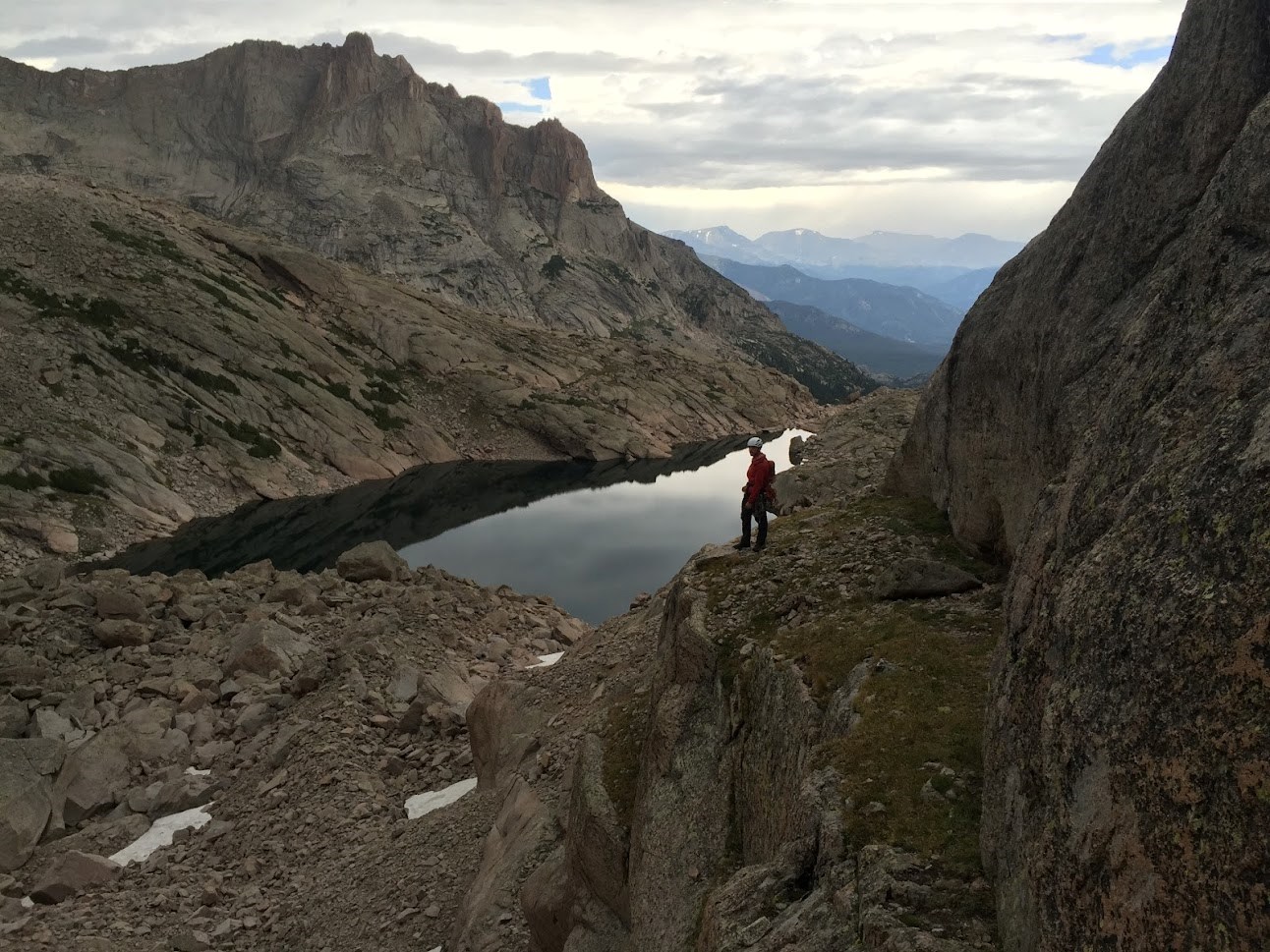
NPS Bolting and Route DevelopmentThe National Park Service does not inspect, maintain, or repair bolts and other climbing equipment anywhere in the park. Make sure your climb is adequately protected by visually inspecting any pre-existing bolts or fixed pins. Rocky Mountain National Park is world renowned for traditional and alpine climbing. Most routes in the park offer adventurous climbing utilizing traditionally placed protection such as cams, nuts, etc. Bolted routes, also known as sport climbs, are rare in Rocky Mountain National Park and are prohibited in the Rocky Mountain Wilderness. A fixed anchor is defined as any piece of climbing equipment that is left in place to facilitate a safe ascent or rappel. Examples include, but are not limited to bolts, pitons, and webbing. Only place fixed anchors as a last resort. All bolts must be placed using a hand drill only. Power drills are not allowed in Rocky Mountain National Park. “Fixed anchors should not be placed merely for convenience or to make an otherwise "unclimbable" route climbable...The infrequent placement of new fixed anchors is allowed when ascending a route to connect terrain that is otherwise protected by removable anchors (e.g., one crack system or other natural feature to another)...New, bolt intensive climbing routes (e.g., sport climbs, bolt ladders) are not appropriate in wilderness and should not be created.” - ROMO Wilderness Management Plan "The establishment of bolt intensive face climbs is considered incompatible with wilderness preservation and management due to the concentration of human activity which they support, and the types and levels of impacts associated with such routes." - NPS Director's Order 41 Equipment, including but not limited to fixed ropes, may not be left unattended for longer than 24 hours or it will be considered abandoned property. Abandoned property may be removed by the NPS and is subject to the following regulations: CFR 2.22 If you are planning on establishing a new climbing route in Rocky Mountain National Park, please reference the wilderness map to determine if your proposed route is in wilderness. Minimum Impact ClimbingPractice the following principels and help to minimize impacts to protect the fragile ecosystesm and climbing areas we all love.
Only by following a low-impact climbing ethic can we protect our outstanding natural features and their biological diversity for future generations All Around YouClimbing in parks and open spaces is a special experience. The sounds and beauty of nature surround the climber and create an environment which cannot be duplicated on urban climbing walls. Beneath Your FeetThe approach to your climb can be considered an experience that must be endured, or an enjoyable part of the whole outdoor challenge. Whatever your attitude, it is critical that climbers understand the impact that human feet have on the ground and on the rock. The access trails which we use to approach climbs, even if no formal trail exists, can be carefully chosen to avoid the heavy impact of the human foot. Rocky slopes will withstand foot traffic far better than delicate canyon bottoms and will not present erosion problems as quickly. Your PresenceWilderness and backcountry climbing areas often have an aura of primitive mystery and serenity, or a feeling that humans have rarely visited a particular area. As we have quietly enjoyed a rocky precipice or a shadowed canyon, we may have been rudely interrupted by the loud or annoying behavior of another park visitor. |
Last updated: July 26, 2022
